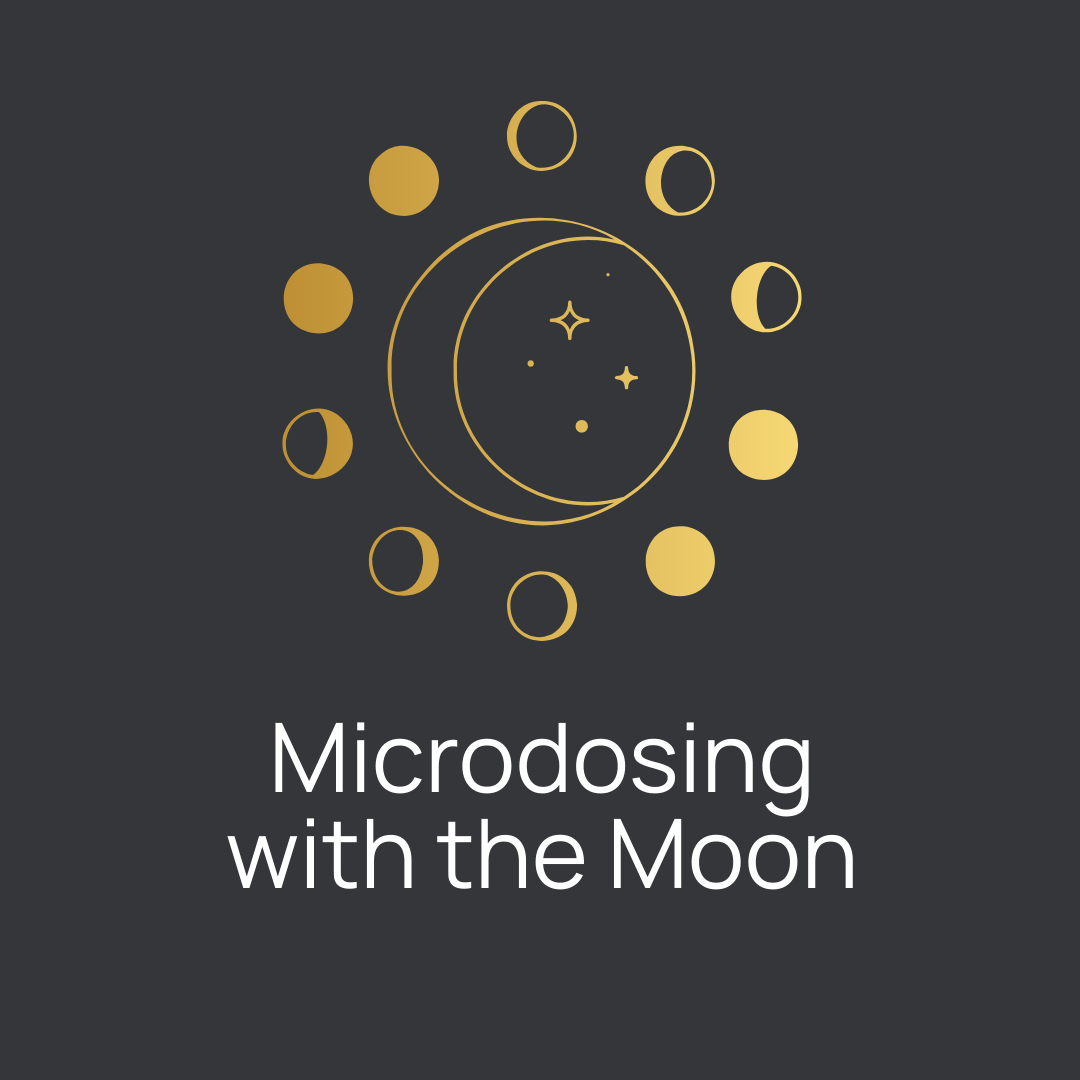Finding Your Keystones: A Scientific Approach to ADHD and Personal Growth
Living with ADHD can often feel like navigating a fast-moving river, where the currents of thoughts, distractions, and impulses threaten to steer you off course. What if there was a simple way for you to stay on track? Finding your keystones—those core values and principles that define and ground you—can be like discovering a compass that helps guide you through the uncertain waters of life with purpose and clarity.
Values for a Company vs Values for a Person
Ever been on a website that has a clearly defined mission statement? There’s a reason for that. Mission statements articulate the essence of a company's ethos, guiding its direction and defining its standpoints. This clarity sets the tone, enriching interactions and fostering connections between employees and customers. Yet, the concept of articulating such foundational elements isn't often applied on a personal level in traditional education. Instead, many find themselves adrift, attempting to navigate their path by mirroring others, only to discover that what works for someone else doesn’t work for them, especially when you have ADHD. “Great” advice is often only great for people with neuro-typical minds, securely attached, and without adverse childhood experiences (trauma). This leads to cycles of vision boarding (or other kinds of visualization techniques) without results.
The missing piece is having clearly defined values. For individuals with ADHD, understanding and applying this concept becomes even more crucial. The neurobiological differences between ADHD and neurotypical individuals mean that traditional methods of finding focus and direction might not always be effective. This is where keystones come into play. Keystones are the words you choose to define who you are and how you are going to show up in the world. Your keystones not only help to guide decision-making but also become an anchor to manage mental and emotional energies.
Priming the Mind for Success with Keystones
The emphasis on "clearly defined" values is not arbitrary. Words carry weight, and the meanings we attach to them often operate below our conscious awareness, influencing our perceptions and behaviors from the shadows of our subconscious. This programming influences our perceptions and behaviors in ways we may not fully realize. To change them, you need to dive beneath the surface, examining the foundational thoughts associated with the language we use.
Consider the word "abundance," a common word people use in manifestation circles. When I hear someone use that word as an affirmation, if I have the time, I'll ask them to explain what abundance truly means to them. Most people don't know indicating a lack of personal connection to the word and not having a defined concept of abundance.
An example that comes to mind is when a client who believed only selecting her keystones was sufficient. And you can probably guess what one of her words was... yep, "abundance." Of course since she was my client, we went deeper to uncover the mixed signals her subconscious associated with her chosen words. Upon deeper exploration, she realized her association with "abundance" equated to possessing lots of things. And the kicker was that she realized she had been manifesting her subconscious understanding of abundance… she was living in clutter.
The process of consciously defining your keystones does more than just clarify your values; it primes your mind by bringing subconscious thoughts to the surface and aligning them with your conscious objectives. This priming is critical, especially for individuals with ADHD, as it helps to navigate the often overwhelming stream of stimuli with intention and purpose. By thoroughly defining what each chosen word truly means, you lay the groundwork for a mindset that is prepared to recognize and pursue opportunities that align with your deepest values.
When you define "abundance" (or whatever words you choose) not just as an abstract concept but as a personal and meaningful keystone, you shift your perception and, consequently, your reality. This shift is not about mere positive thinking but about creating a powerful mental framework that supports your goals and reflects your true self.
How to focus with ADHD: Harnessing the Reticular Activating System (RAS)
At the core of why keystones are so effective for individuals with ADHD lies in the function of the Reticular Activating System (RAS). This network of neurons within the brain acts as a gatekeeper, filtering the vast array of stimuli we encounter and deciding what information gets attention based on what we consciously or subconsciously deem important.
Imagine you're in a crowded coffee shop trying to read a book that you are eager to finish. Despite the surrounding noise—people talking, the sound of the espresso machine, background music—you find yourself able to concentrate on reading. This is the RAS at work, filtering out the extraneous noise and allowing you to focus on the task at hand. It selectively tunes into the pages of your book while tuning out other stimuli.

By consciously defining keystones, you essentially program the RAS to be attuned to the things you want to be focused on. This simplifies decision-making as your brain is predisposed to notice and focus on the thoughts and actions you have already defined for your keystones, guiding your attention toward making decisions that move you forward rather than feeling stuck in overwhelm or analysis paralysis.
Moreover, the science behind staying focused, particularly how dopamine plays a role in motivation and attention, intertwines with the RAS's functionality. The RAS is one of the largest dopamine producing areas of the brain. If you suffer from ADHD symptoms frequently, dopamine production is at the heart of the problem.
When your actions and environment reflect your keystones, it can enhance dopamine responses, reinforcing focus on tasks and goals aligned with your big vision for your future. This creates a helpful cycle, where your defined keystones not only guide your focus but also boost your motivation and satisfaction in pursuing them.
Reducing ADHD Symptoms Through Keystones
The influence of clearly defined keystones extends far beyond mere focus and filtering; it profoundly impacts our executive functions and emotional responses. Research within psychology and neuroscience illustrates that aligning daily life with one's core values can markedly improve emotional well-being, bolster cognitive flexibility, and enhance motivation—areas where individuals with ADHD often face significant hurdles.
Enhancing Emotional Regulation through Keystones
Living in harmony with one's keystones not only fosters a greater sense of self-integrity and coherence but also significantly enhances emotional regulation. This alignment stabilizes emotional states, enabling individuals to navigate through challenges with resilience and an adaptive stress response. Particularly for those with ADHD, where emotional dysregulation can significantly impact daily functioning, the integration of keystones into daily routines and habits provides some structure for managing emotions more effectively. This leads to reduced levels of stress, anxiety, and depression, while acting as a protective buffer against emotional outbursts.
Fostering Intrinsic Motivation through Keystones
Intrinsic motivation, the internal drive to do things, stands at the core of transforming how individuals with ADHD approach their goals and daily tasks. Imagine Sarah, a graphic designer with ADHD, who often found herself waiting to the last minute to complete her projects. The fear of disappointing her clients would spur her into action. When Sarah identified her keystones—creativity, connection, and growth—she experienced a profound shift. No longer was her motivation tethered to the fear of letting her clients down. Instead, Sarah found herself driven by the joy of creation, the fulfillment from meaningful collaborations, and the excitement of personal and professional development. This transition from extrinsic reliance to intrinsic motivation allowed Sarah to engage with her work authentically and passionately, transforming her challenges into opportunities for innovation and resilience.
By anchoring oneself in keystones, individuals like Sarah pivot towards a life where motivation comes from within, instead of seeking approval from outside themself leading to a grounded sense of self that creates forward movement. Setbacks become less about failure and more about growth, fostering a resilient and motivated mindset essential for navigating life's ebbs and flows with ADHD.
Improving Executive Function Through Keystones
Executive function, orchestrated largely by the prefrontal cortex, acts as the brain's command center for managing tasks like attention, memory, and impulse control. In individuals with ADHD, shifting to this kind of thinking is often difficult due to imbalances in the brain’s dopamine system, leading to difficulties in managing these executive tasks. Dopamine is crucial for prioritizing tasks, maintaining focus, and feeling motivated by achievements. Keystones, by providing a clear set of value-driven behaviors and thoughts, directly affect this neurochemical balance, offering a foundation upon which individuals can enhance their executive functioning.
When actions and long-term aspirations are aligned with personal keystones, it's more than goal-setting; it's engaging in a deliberate practice that reinforces dopamine production in a manner conducive to bolstering executive function. Take Alex, for example, a writer grappling with the common ADHD challenge of starting and finishing projects. By identifying "expression," "consistency," and "engagement" as his keystones, Alex approaches each writing session as an opportunity to transform tasks he usually procrastinated into meaningful expressions of himself. This alignment not only reduces stress and decision fatigue but also leverages the neuroplastic capabilities of the brain, particularly in the prefrontal cortex, to foster pathways that enhance focus, planning, and task initiation.
Nervous System Regulation Through Keystones
The journey of managing ADHD and enhancing executive function extends beyond the brain's cognitive processes to encompass the broader nervous system, including the critical role of the vagus nerve in regulating our stress responses. The vagus nerve serves as a key component of the parasympathetic nervous system—the body's counterbalance to the fight-or-flight responses of the sympathetic nervous system. Effective regulation of these systems is paramount in managing ADHD symptoms, as stress and anxiety can exacerbate challenges with focus, impulsivity, and emotional regulation.
Keystones (aka fostering a mindset aligned with personal values and aspirations) can significantly influence nervous system regulation. Engaging in behaviors and thoughts that reflect one's keystones activates the parasympathetic nervous system, encouraging states of calm and relaxation that counteract the hyperarousal often experienced by individuals with ADHD. This shift towards parasympathetic dominance reduces stress and anxiety levels, creating a physiological environment conducive to improved focus and emotional balance.
For instance, through the process of creating your keystones you identify thoughts and actions that align with your core beliefs. These behaviors (compassionate thoughts, mindful actions) can stimulate the vagus nerve, enhancing its tone and thereby bolstering the body's resilience to stress. This enhanced vagal tone supports a more balanced nervous system, enabling individuals with ADHD to navigate their daily lives with greater emotional equilibrium and reduced susceptibility to stress-induced distractions.
Basically, what I’m saying is that by consciously thinking about things ahead of time, you’re more likely to do them even when you’re stressed because you have mentally rehearsed things. So instead of being stressed and repeating habits that you do when you’re stressed, such as productive procrastination, you don’t go into your stress response and instead activate the parasympathetic nervous system. The more time you spend less stressed and more relaxed, the less time you spend anxious or depressed.
Through the strategic definition and integration of keystones, individuals with ADHD can harness the power of their nervous system to support cognitive processes and emotional regulation, laying the groundwork for a life characterized by greater focus, fulfillment, and resilience.
Keystones help you thrive with ADHD
When you are living with ADHD symptoms, the journey towards personal growth and improved functionality hinges on our ability to understand and leverage our own neurobiology. Keystones are not just as a fun thing to do but a practical, neuroscience-backed tool for transformation. Through the process of identifying and integrating these keystones into our lives, we unlock a powerful mechanism for priming our minds, focusing our attention, regulating our nervous systems, and enhancing executive function.
The stories of individuals like Sarah and Alex illuminate the transformative potential of living in alignment with our keystones. They demonstrate that when we shift our motivation from external sources to the intrinsic values that define us, we not only find greater satisfaction and joy in the things we do but also cultivate ease in living despite the challenges.
This isn't merely about adopting a new set of habits or trying to fit into a neurotypical mold. It's about embracing our unique neurological landscape and using it to our advantage. By consciously defining our keystones and allowing them to guide our decisions and actions, we create a life that is not only manageable but truly fulfilling. We move from a state of constant reaction to one of intentional action, where each choice is a step towards realizing our true potential.
Remember, the path to managing ADHD effectively and achieving personal growth is not linear. It's a journey of exploration, understanding, and, most importantly, compassion for oneself. Your keystones are your compass on this journey, offering you direction when you feel lost and providing a sense of stability amidst the chaos.
You're not alone on this journey, and I’ve done the research, created a Keystones workbook and course and because I know how simple and effective it is, I give it away for free.
By consciously choosing and living by your keystones, you're not just managing ADHD symptoms; you're setting the foundation for a life of purpose, fulfillment, and achievement.

References:
Singh I, Filipe AM, Bard I, Bergey M, Baker L. Globalization and cognitive enhancement: emerging social and ethical challenges for ADHD clinicians. Curr Psychiatry Rep. 2013 Sep;15(9):385. doi: 10.1007/s11920-013-0385-0. PMID: 23933975.
NEUROSCIENTIFICALLY CHALLENGED - KNOW YOUR BRAIN: RETICULAR FORMATION
Martin, Andrew J., Emma C. Burns and Rebecca J. Collie. “ADHD, personal and interpersonal agency, and achievement: Exploring links from a social cognitive theory perspective.” Contemporary Educational Psychology 50 (2017): 13-22.
Shigemoto, Yuki, Blakely E. Low, Dominika Borowa and Christine Robitschek. “Function of Personal Growth Initiative on Posttraumatic Growth, Posttraumatic Stress, and Depression Over and Above Adaptive and Maladaptive Rumination.” Journal of clinical psychology 73 9 (2017): 1126-1145 .





